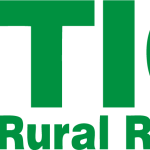Recent analysis by University of Nebraska faculty calls for additional on-farm research targeted at identifying the causes for the inferior yield performance in irrigated soybean fields in northeast Nebraska. Soybean variety selection is the earliest routine management decision for your crop and many agronomist feel that it is one of the most important. Third-party trials in the region show a 15 bu/ac performance difference between varieties on the market (Table 1), even half of this yield equates to a $75/ac revenue difference between varieties. The price between varieties in a company lineup likely only varies as much as $9/unit.
Table 1: Pathway to higher soybean yield.
| Rank | Management factor | Yield (bu/ac) |
| 1 | Variety selection | 15 |
| 2 | Planting date | 8 |
| 3 | Weed control | 8 |
| 4 | Phosphorus fertility | 5 |
| 6 | Crop rotation | 5 |
| 5 | Row spacing | 3 |
| 6 | Seeding rate | 3 |
Even though the combines have not started rolling yet, go ahead and capture those early seed discounts and here is why. Seed companies have internal data showing the average performance difference between their products during previous seasons, even new varieties. They probably won’t tell you many bushels better one variety yielded over another on average, but they do share this through variety recommendations in your region. Ask them if the supply for some varieties they recommend are a little tighter than others and consider booking those if they sound like a good choice for your farm. Again, select several varieties with your dealer that appear to best to fit your production style and farm ground. Then, once 2014 yield data is available from third party and company trials, evaluate the varieties you ordered and see if you want to make a substitution. Your seed dealer will do this for you.
There are some other important considerations besides just yield reported in a trial since not all fields have the same yield limiting factors. Soybean Variety Selection Guidelines:
- Proven yield record (Third-party and company data including multi-year and several locations is possible)
- Select disease resistance package needed for the field (SDS, SCN, Phytophthora, etc.)
- Use a range of maturities (e.g. such as 2.8-3.3, short periods of heat/drought in August may impact the 3.3 more than the 2.8 or vice versa)
- Match up traits with your management practices/field (e.g. Focus on lodging or standability rating in high fertility/irrigated fields)
If you have a field with a history of Sudden Death Syndrome (Figure 1), soybean cyst nematodes or other agronomic issue best managed through variety selection, weigh this out with yield performance of varieties within trials, especially if the trial did not have these limitations. Diversify your lineup (plant more than one variety!) and spread out your maturity to avoid short heat waves and dry periods within August to minimize impacting all of your acres.

Figure 1. Foliar symptoms of Sudden Death Syndrome this August in the Elkhorn River Valley. Variety selection is one of the key steps to managing this disease.
Here is a list of regional third-party trials to help with variety selection in addition to company-hosted trials:
- F.I.R.S.T Soybean Testing Program
- Iowa State University Crop Testing
- South Dakota State University Crop Performance Testing
- University of Nebraska Variety Testing Program
Watch this Market Journal episode on selecting soybean varieties.
Crop Tech Cafe – Fremont, NE
Feeding a world through improved cropping systems an emerging ag technologies


